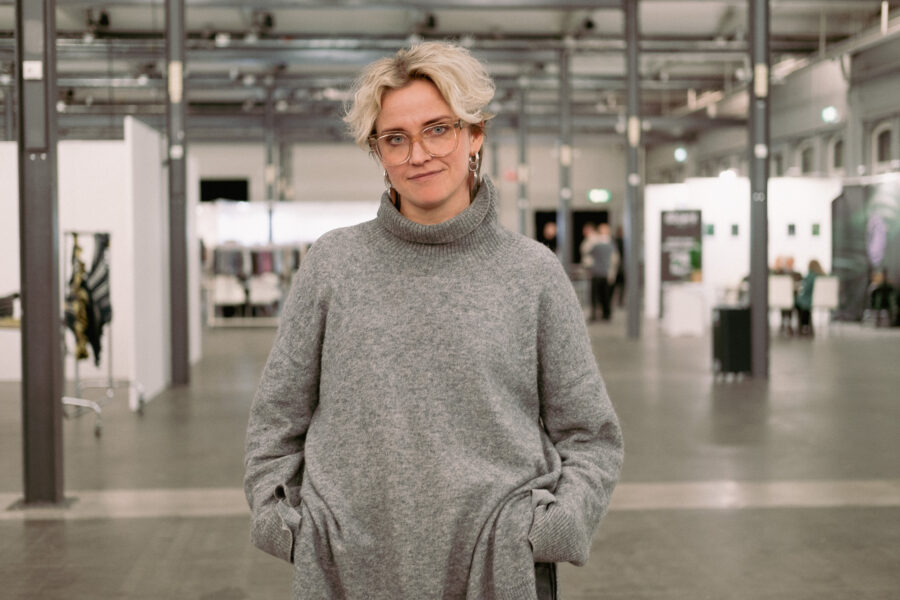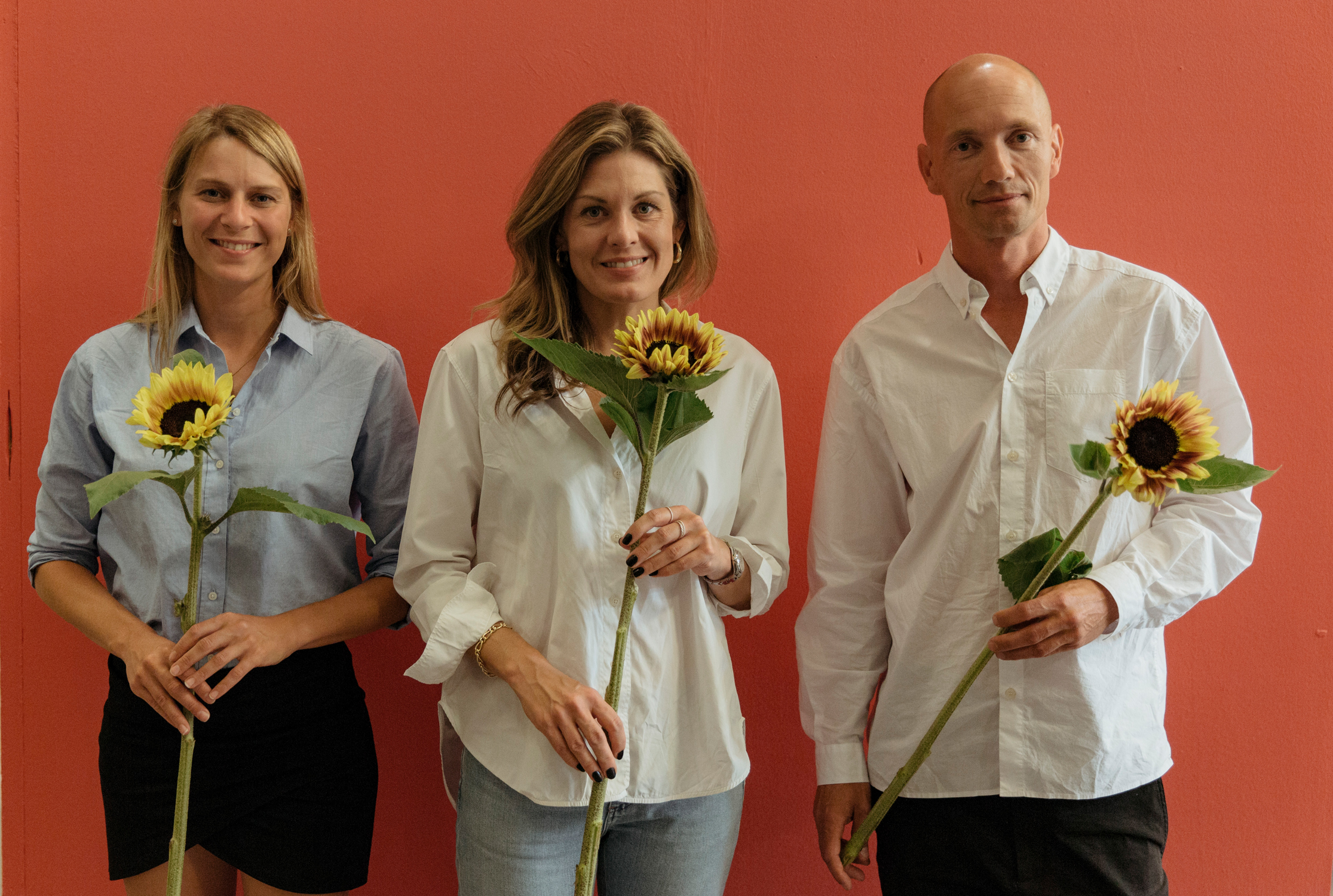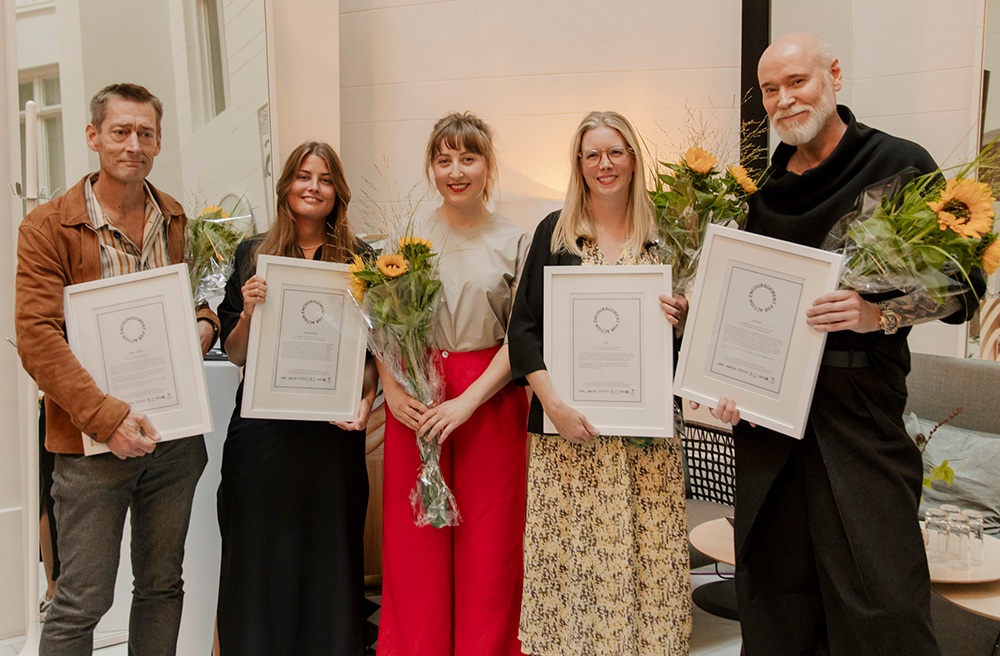
Anna Lidström: Here’s how to implement redesign in your daily operations
Sweden’s first Doctor in redesign, who also has a background in “conventional” fashion design, shares how to find value in your waste. Last year was quite a special one for Anna Lidström, researcher and Senior Lecturer at The Swedish School of Textiles in Borås, when she became the first Doctor in Redesign.
– It’s been a long process working with the thesis – five years, almost six, she shares. It’s also a field of interest that I’ve had since I was a teenager which means that, for me, it was wrapping up a really long red thread. After so much hard work, it’s such a relief to get it all compiled and also be able to both celebrate it and keep on working with this subject.
How was the process, when working with your thesis?
– As part of doing the artistic research and teaching, I’ve also been doing a lot of industry work in Science Park Borås. The thesis work in itself has been a long process of working with fashion design students. Together, we’ve been trying to detect different possibilities, obstacles, and problems when working with a garment as material, which is what you do in redesign; transforming something already existing. It’s been a long process of trying to understand what it actually means to work like this. When I started, from the industry perspective that I’ve had, I was a bit trapped in the more technical aspects of this. Working with design students over a long period of time is really fruitful in order to get hold of other types of questions, even if they are related to the technical ones. So, it’s been a real journey, almost philosophical, to understand and grasp what this actually is.
Throughout these years, you‘ve also seen the conversation about upcycling and redesign changing, developing, and becoming more mature. What’s your view on that?
– Yes, it’s been an interesting journey. When I started, I remember that when I was giving lectures, I had googled different definitions just to show what comes up when you search for ‘redesign’. It was very traditional, what you expect it to look like, and not as interesting from a design perspective. People in the industry then said that, ‘OK, this is a fun DIY product, we can sell patches to our customers so they can put it on themselves at home.’ It’s gone from that, more ‘crafty’, DIY thing to now, where we have bigger companies that are at least trying to implement redesign as one sustainable strategy among others. We also have the Swedish fashion scene which now consists of many brands, such as Hodakova, Main Nué, and Rave Review, that are purpose-driven and design-driven and deal with waste streams of textiles and garments. We have both seen an implementation in the traditional fashion scene and also so many new talents arise with new business models that are connected to this. The whole field is completely changed.
You’re also talking about re-evaluating the design methodology for brands and brand owners and we all know how big of an impact it is until the garment reaches the consumer. How do brands need to rethink to be able to implement upcycling in their daily operations?
– It’s a big question. First of all, we need to address the low quality, the big volumes, and the fast pace. In relation to that, I think it’s really interesting that so much design exists that is hardly unique. The amount of leftovers existing within different companies that could be reused and become a resource for another company, is really interesting to look into, Lidström shares. She continues:
– Something that I have faced in conversations with fashion brands is that they think that redesign has to be something very complex. So it’s also about showing that adding a print to T-shirts that you already have, is also redesign. A lot of my work is on demonstrating the different possibilities and, depending on the level of effort or labour put into the redesign, you can either do it very simply and many of the same or you can scale. As mentioned, In conversations with brands, I just look at their assortment and try to pinpoint that they can do several different things related to redesign and detect their own possibilities.
– As a designer working conventionally, which I’ve also been doing, it’s so much about the product. ‘I need the product to convince that this is a good idea, that someone wants to put effort into it and make it, and order it from the factory.’ I think the same thing is needed when we talk about redesign; the good examples, to demonstrate that ‘this is a nice style that could fit for the spring of 2024.’ Showing interesting expressions or products could also foster or enable new business models to rise and show what can be done with certain deadstock products. And perhaps a machinist and a washing facility are needed in the warehouse, and then you have a new business. Again, that’s how I work in design with companies – trying to make them see what they have and build from that. It’s a reversed way of working.
As a part of this development, we’ve also seen local initiatives in Sweden being able to hire more people to redesign garments.
– Yes, and that’s also where we have the potential. We can’t compete with making, for instance, silk blouses – that kind of textile production can’t exist in Sweden for many different reasons. But we have other things that we can do with the help of technology and other infrastructure. And also this whole field of redesign, which I’ve seen throughout these years that I’ve been working – new business has arisen around waste streams of different kinds. We also have much more development that can be done – things are really happening super-fast now.
In your research, you’ve mostly looked at brands and designers but the industry is big with many different players. Can also factories and retailers look at your thesis and learn stuff?
– Yes, hopefully! It’s (the thesis, Ed’s note) made for other professional designers and students within the design field because I see that that’s something missing; the expressive properties of these materials and also how to work as a designer. But in order to save resources, money, and different costs, we should also be able to, for instance, redesign in the factories to begin with, when everything is collected, before it’s scattered around the world. And that could also be a way – when you see that maybe something is going wrong, you can try to fix it there, in the factory. And also that the major companies have that dialogue with their producers. However, the problem is that the producers don’t know what to do with a pair of jeans, but they know what to do with the roll of fabric of denim. So again, in this shift in thinking there’s still so much that needs to be done. A lot has happened, but we still need to work on terminology and methodology and also explain that this is another perspective which has effect on business and production.
Lastly, can you share a future perspective? And what are the keys in order for upcycling and redesign to continue to flourish?
– What’s constantly on my mind, as a crucial part, is the sorting, Lidström shares. Now we need to really get local with the sorting, because of the (coming EU) regulations, and see the value of the material, because we will have mountains of garments and waste. With this new European ‘pressure’, things will happen fast, and now, I see that the perspective on sorting for design is popping up everywhere. So we have the fibre recycling but we will also have the redesign and sorting for reselling in second-hand stores.
– I also think it’s really interesting to look at technology. In Sweden, labour is a quite high cost. So how can we use technology to support design decisions, but also like sorting decisions and facilities so we can keep the material here? I have been speaking about the expressive side of design and redesign, and I do have a lot of hope for the future. Just looking at this fashion scene that we have in Sweden now in new talent development and such is so inspiring. What they are doing is trickling down to the fashion design students in finding ways to ‘hack’ the system, be a part of fashion without being part of the big brands and instead find your own path in this. There are plenty of possibilities though, however, still very hard to do business.
– This is one part of many sustainable approaches, but what is interesting to see is that the bigger brands are looking into their own business models of how they could collect their own unsold goods and make something out of them. We can provide a new perspective, the fashion brands are zooming out and looking for their own business models and trying to find redesigned sources. It’s not just one option – there are several solutions and possibilities which makes me really hopeful for the future.




